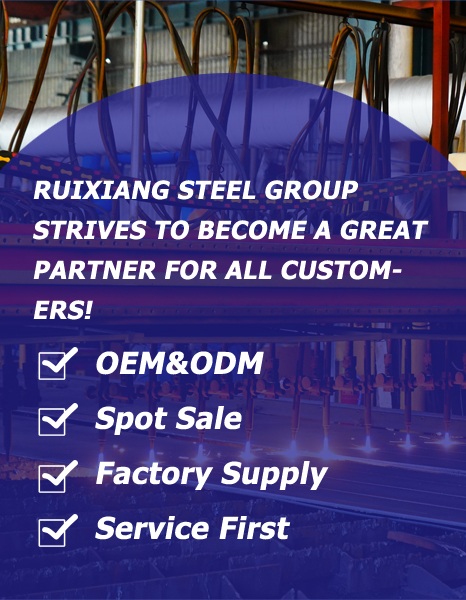H-Beam vs. I-Beam: Structural Differences and How to Choose
 Click:207Edit: Admin
Click:207Edit: Admin Time:2025-10-07 19:35:38
Time:2025-10-07 19:35:38
H-Beam vs. I-Beam: Structural Differences and How to Choose
When selecting structural members for construction and industrial applications, understanding the differences between H-beams and I-beams is crucial for optimal design and cost-effectiveness. While these steel sections may appear similar to the untrained eye, they possess distinct structural characteristics that make each suitable for specific applications. As a trusted steel supplier, Ruixiang Steel provides both H-beam and I-beam products along with technical guidance to help customers make informed selection decisions.
Key Structural Differences
Cross-Section Geometry
The fundamental difference lies in their cross-sectional shape:
I-beams (also known as universal beams) feature a distinctive "I" shape with tapered flanges that are thinner than the web. The flange width is typically narrower than the beam depth.
H-beams (also called wide flange beams) have a more rectangular "H" appearance with flanges that are generally equal in thickness to the web. Their flanges are wider than those of I-beams relative to the section depth.
Manufacturing Processes
I-beams are typically rolled as single pieces in standard sizes, limiting customization options.
H-beams can be produced as rolled sections or fabricated by welding three separate plates, allowing for greater customization in dimensions.
Mechanical Properties
I-beams exhibit high resistance to bending in the direction parallel to the web, making them efficient for pure bending applications.
H-beams provide more balanced strength characteristics in both directions due to their wider flanges.
Strength and Load Capacity Comparison
Bending Resistance
I-beams excel in unidirectional bending applications where loads are applied perpendicular to the web.
H-beams offer superior performance in applications requiring strength in multiple directions or where lateral stability is a concern.
Weight Distribution
I-beams concentrate material at the extreme fibers where it's most effective for resisting bending moments.
H-beams distribute material more evenly across the cross-section, providing better resistance to twisting and buckling.
Application-Specific Selection Guidelines
When to Choose I-Beams
Building columns and beams in standard construction
Platforms and mezzanines with moderate span requirements
Support structures where primary loading is vertical and unidirectional
Cost-sensitive projects requiring standard sections
When to Choose H-Beams
Heavy-load bearing columns in high-rise buildings and industrial structures
Long-span applications requiring minimal deflection
Structures subject to multidirectional loading
Applications requiring enhanced lateral stability
Custom fabrication projects with specific dimensional requirements
Practical Considerations for Selection
Availability and Cost
I-beams are widely available in standard sizes, typically at lower cost
H-beams may require longer lead times for custom sizes but offer better strength-to-weight ratios
Connection Design
I-beams present challenges for connections due to their tapered flanges
H-beams provide parallel flange surfaces that simplify connection design and fabrication
Installation and Handling
I-beams are generally lighter for equivalent depths, easing handling and erection
H-beams offer greater stability during construction due to their wider flanges
Ruixiang Steel's Product Range
We supply comprehensive structural beam solutions:
Standard I-beams in various sizes compliant with international standards
H-beams in multiple grades and dimensions for diverse applications
Technical support for beam selection and specification
Custom fabrication services for project-specific requirements
Conclusion
The choice between H-beams and I-beams ultimately depends on specific project requirements including load conditions, span lengths, connection details, and budget constraints. I-beams offer cost-effective solutions for standard applications with unidirectional loading, while H-beams provide superior performance for heavy-load and multidirectional loading scenarios. By understanding these structural differences and consulting with experienced suppliers like Ruixiang Steel, engineers and contractors can optimize their structural designs for safety, efficiency, and economy.
 Click:207Edit: Admin
Click:207Edit: Admin Time:2025-10-07 19:35:38
Time:2025-10-07 19:35:38

